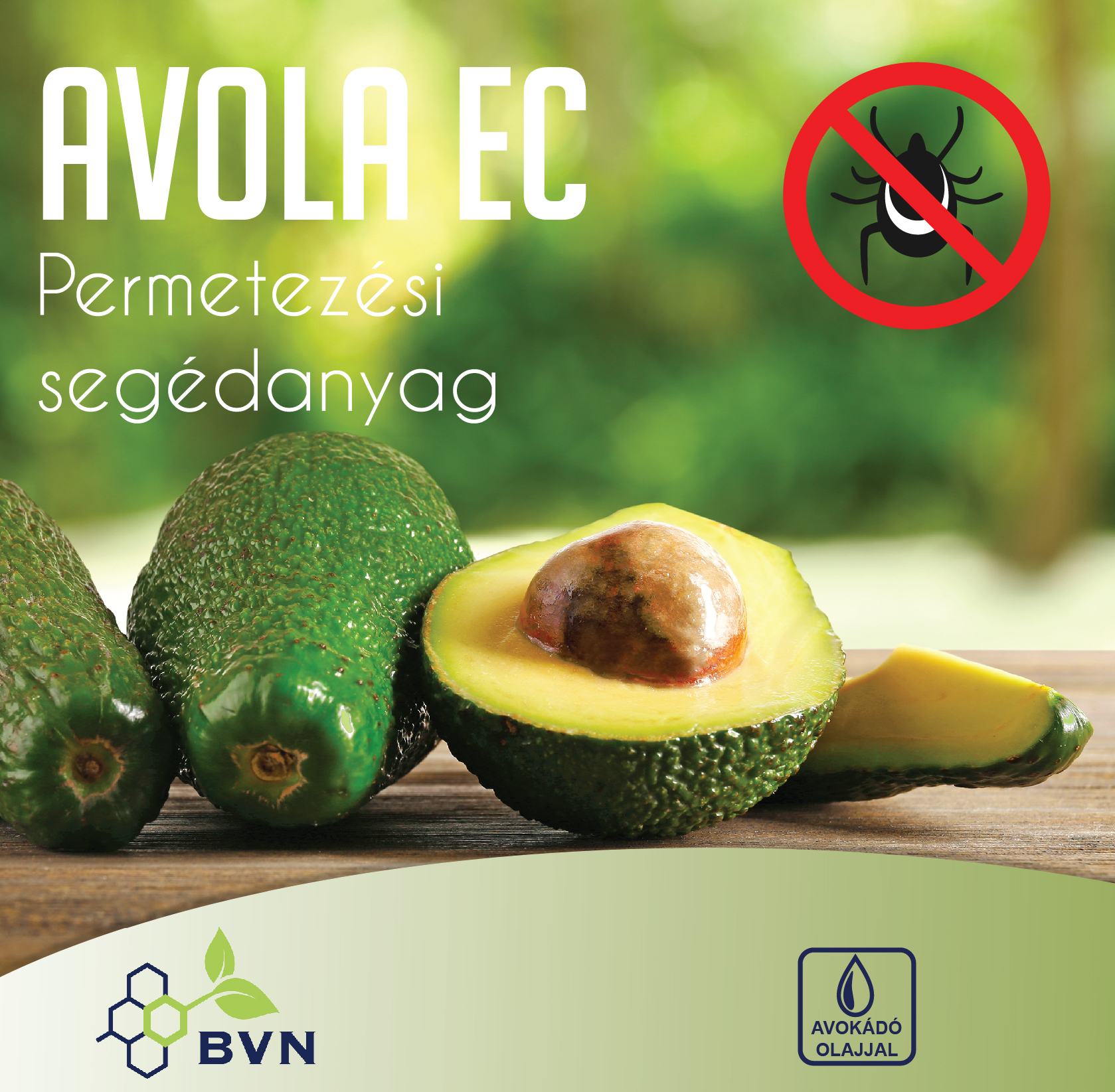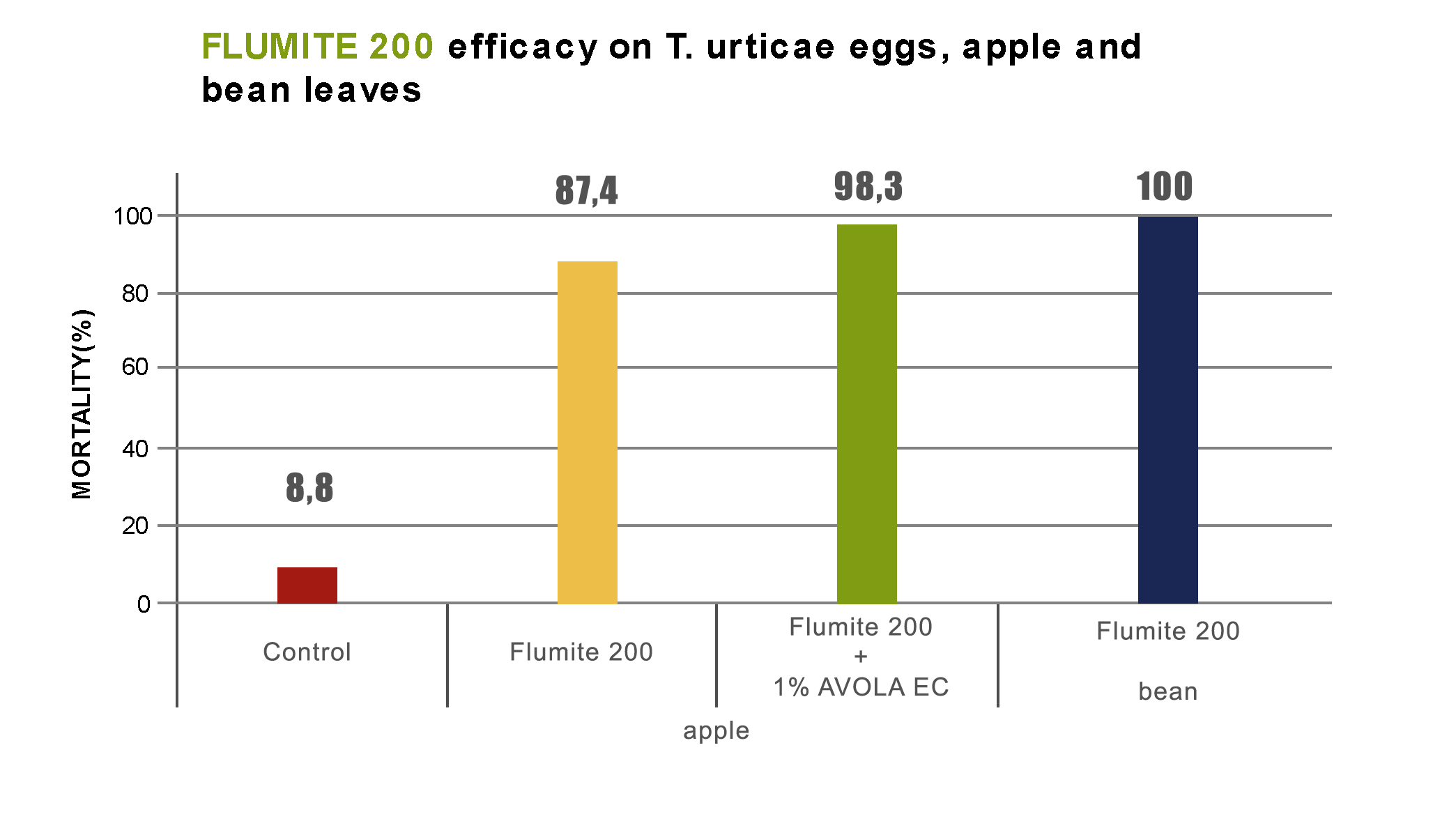AVOLA EC –
product description
The problem
Planning a rational and even environmentally friendly defence against these pests often puts even the best-prepared farmers in quite a difficult position. However, the use of acaricides requires a particularly high level of preparedness when used against quick reproducing mites as mites have an extraordinary ability to develop resistance. An essential condition for the effective use of acaricides is that spraying ensures that the active ingredient is applied close to the site of action. The morphological structure of the plant leaf, thus primarily its waxiness and thickness, may be determinant in the penetration of translaminar substances and therefore their efficacy. In this same manner, the webs built by spider mites also significantly decrease the ability of the spray droplets to exert their effects (Figure 1).

Additionally, consumers consider the absorption of certain plant protection active substances to be something constant, and product brochures do little to dispense with this notion. However, it helps to realise that the rate of absorption via the leaf surface of locosystemic (translaminar) and true systemic active substances (which move through vascular bundles) varies. The effects of the waxiness of leaves are well-known in other environments, thus mainly when treatments are held off for a few days after heavy rains to protect the culture crop and wait for the necessary waxiness to be replaced.
The wax layer (fatty acid – esters – cutin) can decrease the attainable pesticidal effect when using non-contact pesticides, acaricides, and fungicides. This is especially disadvantageous when battling burrowing pests and pests that cause damages to hard-to-reach plant areas or within the plant tissue.
Currently, there are no systemic acaricides that have systemic effects; once applied to the plant, they work as contact or as translaminar products. Due to the fact that spider mites most frequently start reproducing on the more protected undersides of leaves, getting the spray to the mite habitat is a difficult challenge when spraying. The selection of a good adjuvant is therefore especially important when using acaricides. Practical experience shows that oil-based adjuvants are the most common, which can be used to realize significant increases.

The AVOLA EC target area
This is the first excipient used for acaricides that was created and licensed in Hungary. Its use improves the absorption of the acaricide by the plant. It improves the acaricide’s total pesticide effect (Figure 1), especially when the leaf of the treated plant has thickened or become waxy due to environmental factors. Today, producers generally use various oil-based materials as adjuvants to improve efficacy. Although these are also effective, AVOLA EC was developed precisely for this purpose. It has a number of components that promote absorption. Of these, avocado oil has to be mentioned first and foremost, which is currently used for the same purpose in cosmetics. The product also contains other ingredients that are responsible for improving absorption.

Figure 1: The adjuvant effects of Avola EC as shown by laboratory testing on thickened, waxy summer-time apple leaves, when used as an adjuvant for the translaminar ovicide active ingredient, in comparison with a laboratory-grown bean plant used as positive control (Budapest, 2017)

